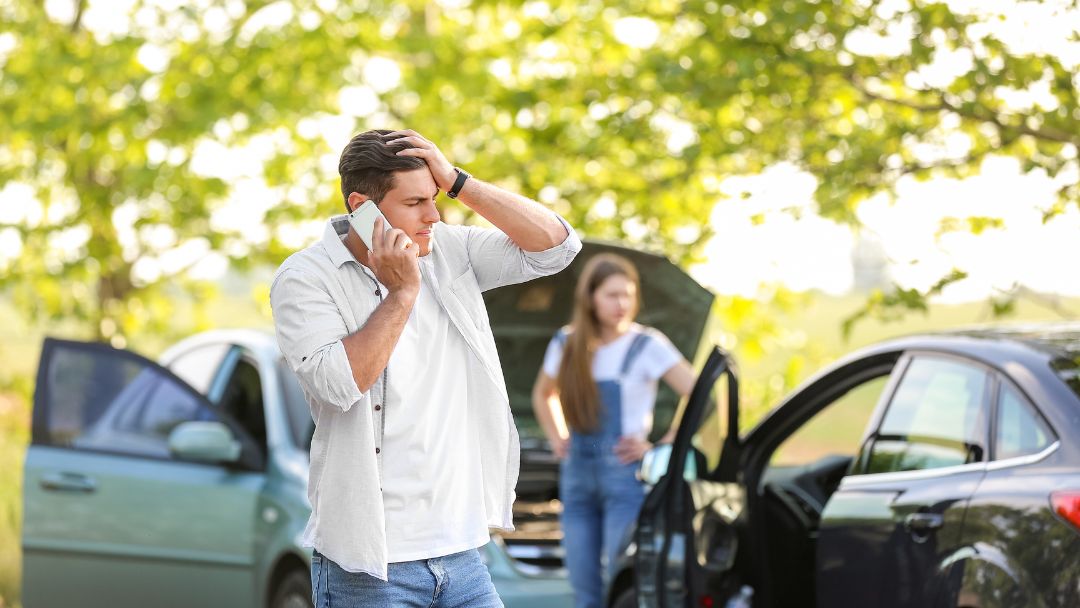What to Do After a Car Crash: A Critical 5-Step Guide
A car crash is a sudden, traumatic event. Knowing what steps to take in the immediate aftermath is crucial—not just for your physical well-being, but for protecting your legal rights to compensation.
Here is the definitive guide from the personal injury attorneys at Lloyd & Lloyd Law on what you must do after an accident in Tulsa, Sand Springs, or anywhere in Oklahoma.
Step 1: Prioritize Safety and Stabilize the Scene
The first few minutes after a car crash are critical. Your safety and the safety of others must be the absolute top priority.
- Do Not Leave: Never leave the scene of a car crash, even if it seems minor. Doing so can result in criminal charges.
- Assess Injuries Immediately: Check yourself and all passengers for injuries. Even if you feel fine, adrenaline can mask pain.
- Move to Safety:
- If your vehicle is operable and it is safe to do so, move it to the side of the road, a shoulder, or a nearby parking lot.
- If you cannot move your vehicle, turn on your hazard lights immediately to warn oncoming traffic.
Step 2: Contact Emergency Services and Document Injuries
The police report and your initial medical treatment form the foundation of any personal injury case. You must get both.
- Call 911 (Police and EMS):
- Call the police to ensure an official police report is filed. This report documents basic facts and often notes initial liability, which is vital for your claim.
- If anyone is visibly hurt, request emergency medical services (EMS) right away.
- Seek Immediate Medical Attention: This is the most important step for both your health and your case.
- Get Examined: Go to the emergency room, urgent care, or your doctor immediately. Do not wait until the next day.
- Be Specific: When speaking to doctors, clearly explain that your pain or discomfort is a result of the car crash.
- Document Delayed Symptoms: Injuries like whiplash, concussions, and soft tissue damage often don’t show up for 24-72 hours. Medical records that link these symptoms back to the crash date are non-negotiable for your claim.
Step 3: Collect Evidence at the Scene
The facts and physical evidence gathered at the crash site can make or break your ability to prove the other driver was at fault.
- Gather Driver and Insurance Information:
- The other driver’s full name, phone number, and driver’s license number.
- The insurance company name and policy number.
- The license plate, make, and model of all vehicles involved.
- Take Comprehensive Photos and Videos:
- Photograph the damage to all vehicles (close-ups and wide shots).
- Capture the entire scene, including skid marks, relevant traffic signals, and road conditions (wet, icy, etc.).
- Take pictures of any visible injuries.
- Identify Witnesses: Do not let a witness leave without their name and phone number. An impartial third-party account is incredibly valuable.
- Stay Silent About Fault: Never apologize or say anything that could be interpreted as admitting fault, such as “I didn’t see you.” Simply exchange factual information.
Step 4: Handling the Insurance Companies (Call a Lawyer First)
The other driver’s insurance company is not on your side. Their goal is to pay you as little as possible.
- Do Not Give a Recorded Statement: The opposing insurance adjuster may call quickly and request a recorded statement. Politely refuse. Anything you say can be twisted and used against your claim later.
- Limit Information to Your Own Insurer: When notifying your own insurance company of the car crash, stick only to basic facts (where, when, who).
- Consult Your Personal Injury Attorney: Contact a lawyer from Lloyd & Lloyd Law before you have serious discussions with any insurance company.
- We handle all communications and negotiations, ensuring your rights are protected from the start.
- We understand the true value of your damages—including medical bills, lost wages, and pain and suffering—and fight for the compensation you deserve.
Step 5: Follow Through with Medical Care and Documentation
Your consistency after the crash is vital for both your health and your legal recovery.
- Follow Doctor’s Orders: Attend every follow-up appointment and complete any treatment prescribed, such as physical therapy. Discontinuing treatment early suggests to the insurance company that your injuries were minor.
- Maintain Detailed Records: Keep a designated file for all bills, medical reports, and out-of-pocket expenses related to the car crash.
- Keep a Pain Journal: Document your daily symptoms, pain levels, and how the car crash interferes with your job and everyday activities. This helps quantify your “pain and suffering” damages.
How Lloyd & Lloyd Law Can Help
After a car crash, your focus should be on your recovery. The last thing you need is the stress of fighting with insurance companies, navigating complex legal forms, and trying to prove your case.
At Lloyd & Lloyd Law, we take on that burden. We will handle all negotiations with the insurance company, collect and organize your medical and financial records, and fight for the full compensation you deserve.
From the moment you contact us, we are your advocates, guiding you through the process and building the strongest case possible so you can focus on getting your life back on track.

